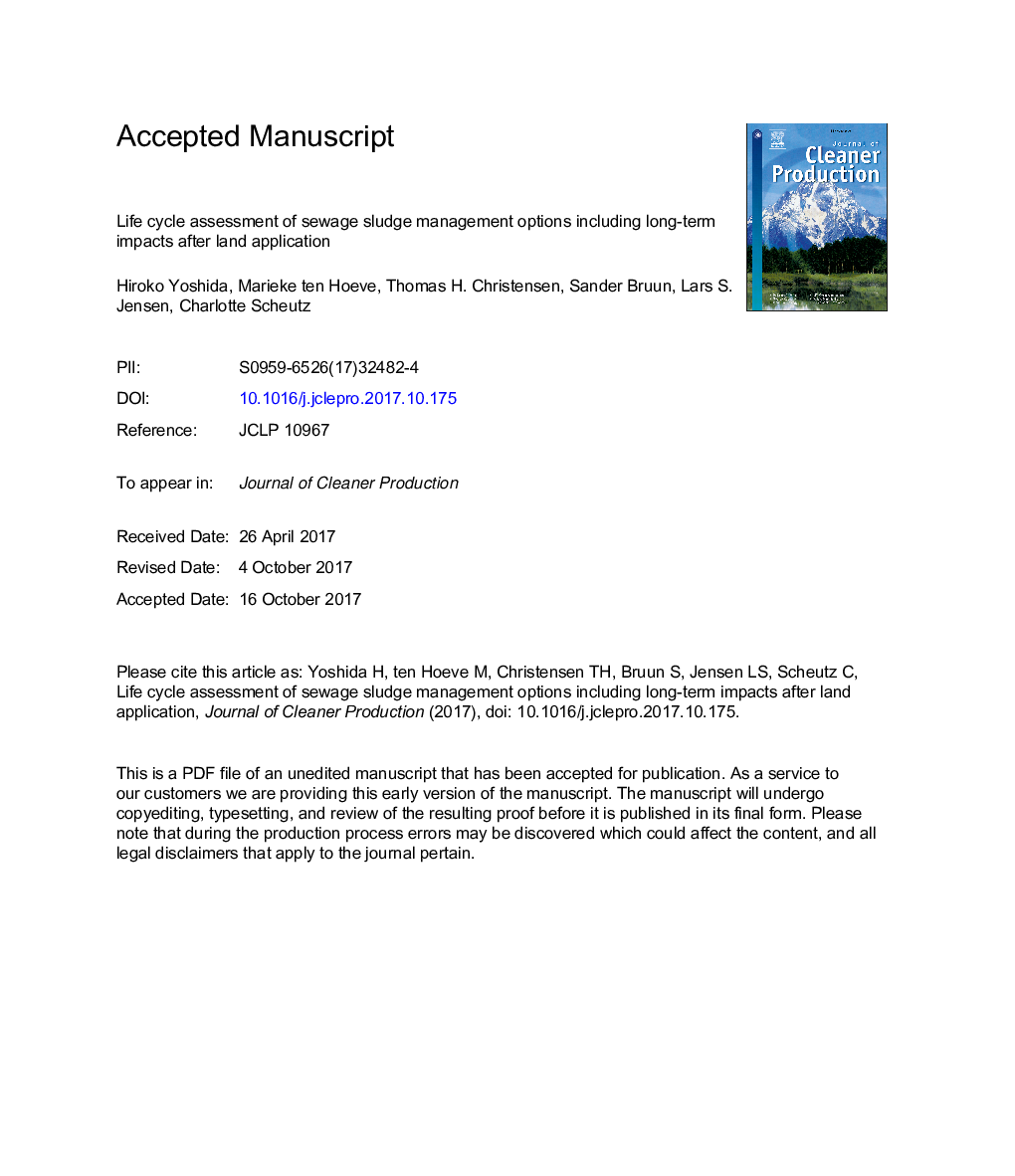| Article ID | Journal | Published Year | Pages | File Type |
|---|---|---|---|---|
| 8099513 | Journal of Cleaner Production | 2018 | 28 Pages |
Abstract
A life cycle assessment (LCA) was performed on five commonly applied sewage sludge treatment practices: dewatering of mixed sludge (DMS), lime stabilisation of dewatered sludge (LIMS), anaerobic digestion of mixed sludge (ADS), dewatering of anaerobically-digested sludge (DADS) and incineration of dewatered anaerobically-digested sludge (INC). In the first four scenarios, the sludge residues were applied on agricultural land, while in the fifth scenario ash from sludge incineration was landfilled. It was found that the sludge treatment technology influenced in which processes carbon (C) and nitrogen (N) emissions happened. In general, the INC scenario performed better than or comparably to the scenarios with land application of the sludge. Human toxicity (non-carcinogenic) and eco-toxicity showed the highest normalised impact potentials for all the scenarios with land application. In both categories, impacts were dominated by the application of zinc and copper to agricultural soil. For the eutrophication potentials, different scenarios appeared beneficial depending on the receiving compartment in focus. The fate of phosphorus (P) dominated freshwater eutrophication, while the fate of N had a profound effect on all non-toxic impact categories other than freshwater eutrophication. The sensitivity analysis showed that the results were sensitive to soil and precipitation conditions. The ranking of scenarios was affected by local conditions for marine eutrophication. Overall, the present study highlighted the importance of including all sludge treatment stages and conducting a detailed N flow analysis, since the emission of reactive N into the environment is the major driver for almost all non-toxic impact categories.
Keywords
Related Topics
Physical Sciences and Engineering
Energy
Renewable Energy, Sustainability and the Environment
Authors
Hiroko Yoshida, Marieke ten Hoeve, Thomas H. Christensen, Sander Bruun, Lars S. Jensen, Charlotte Scheutz,
